Training Talk: Zone 2 marathons and using races as training
With a few notes on the new aerobic endurance feature in HRV4Training Pro
As I build towards the 100 km del Passatore, I have planned to use a few races as training, limiting the effort, to make sure I can recover quickly and keep training for my main event (I am not so confident I can race a marathon and recover quickly anymore, getting old after all!).
In this post, I cover these events, looking at differences in internal load and performance, and how we can use the Aerobic Endurance feature in HRV4Training Pro to capture some of these differences, as well as recovery between events, and the effect of other stressors (e.g. traveling, the heat, etc.).
These are the events I am using as training towards Passatore (which is on May 25th):
Maratona del Lamone, April 7th
ran 3h 11’ 57”, first half in 1h 37’, second half in 1h 34’
Boston Marathon, April 15th
ran 3h 16’ 28”, first half in 1h 38’, second half in 1h 37’
50 km di Romagna, April 25th
ran 3h 57’, which was a personal best. First half in 2h 01’, second half in 1h 56’
Using races as training can be challenging, but I think at this point in my journey, I have no problem parking my ego and running slower than I probably could, for the sake of long-term goals (see point above about getting old, maybe we do acquire some wisdom).
The first event was the Maratona del Lamone, back home. I went into the race on very high volume, since the logistics for this race were really easy (just driving 35 minutes from home to get to the start, zero stress):
I felt good and fresh that week, especially after taking two easy days before the race, running only 10 km each day.
I ran the marathon in Zone 2, as an easy but focused effort. I didn’t know what to expect in terms of pace, and planned to let my heart rate decide, as I don’t really run at this intensity during training, and these days I don’t even have flat roads near home (while the marathon was flat).
To determine my heart rate for top end zone 2, which would be what I consider just around / below the first lactate or ventilatory threshold, many years ago, when I started paying more attention to exercise intensity, I simply used 75-78% of my maximal heart rate. Given my maximal heart rate, I consider top-end zone 2 a heart rate of 145-150 beats per minute.
Later in my journey, I also measured lactate, which was generally in agreement with this heart rate. If you go for lactate, make sure to use long steps, 6-8 minutes, and start at very low intensities, then increase gradually. This is an easy test to do since you don’t need to get to any particularly hard effort: when you see your lactate rising above resting values, it means you are probably around this first threshold. For a well-trained athlete, this intensity is quite a bit below marathon pace, hence it was my target for these races (I would race a marathon just below 160 beats per minute, hence we have a good margin here).
Finally, as we get better and understanding effort, perceived effort (RPE) becomes key as well. Needless to say, these intensities need to feel easy, and these days I pay a lot of attention to how I feel subjectively, and adjust accordingly. However, I do find heart rate still very useful, especially as a cap, to make sure I don’t overdo it. Long races (marathon or longer) require us to go at a low relative effort, to be able to maintain it for so long, and as such, it takes really little to overdo it in the first part, turning the race into an ugly spectacle in the last part. Thanks to trial and error in training and racing, I ended up with a few heart rate limits that I know I need to respect, to avoid issues (see here for something specific to the marathon).
I had a good day at the Maratona del Lamone on one of the first warm days of the year. I felt strong and had a lot of fun out there. I was really pleased with my pace in zone 2, it was more or less a 3h 15’ marathon, but I pushed the last 5 km and finished in 3h 12’. At that point, I got quite optimistic for Boston, and thought the downhill course and crowds could push me a bit quicker, but we’ll see below how that plan had to change to adjust to my physiological state.
Below I put side by side my pace (min/km) vs heart rate for a similar zone 2 effort back in 2017 (left side) and for Sunday's run (right side):
In between, lots of training. It is quite amazing how we can turn around our physiology even when starting from zero, and without any particular talent. See this blog for some more insights on my training process in the past 14 years, as well as this one for a discussion about (my) training zones.
I have decided to do these three events in a short time mostly because the Maratona del Lamone is part of the Trittico di Romagna, a series of three events run in 7 weeks, ranging from the marathon to the 100 km, in our region, where I recently relocated for part of the year.
I’d like to keep running these events in the future, if my health allows. We are fortunate to have a beautiful territory around us, and really nice events, and I really feel no need to go racing elsewhere at this point (a feeling reinforced by Boston, a great event, but I don’t feel like the traveling, jetlag, etc. are worth it anymore for me. If I go for another major, it will almost certainly be in Europe).
Anyways, this is my first attempt at the Trittico and I am starting conservatively, training through the first two events, and racing only the third, as I do not think I will otherwise recover in time for the 100 km, which is the event that matters the most to me. In the future, maybe I can try to push a bit more in the first two events as well, let’s see what health and fitness bring.
In between the first and second events of the Trittico (Maratona del Lamone and 50 km di Romagna) I went to Boston. It took me 15 years to qualify, and I was really happy to be there and race this course at least once in my life, despite the poor timing, as I was already preparing two other events.
In Boston, I had planned to run just like the previous week in Italy, with a zone 2 effort until the last few kilometers, then pushing harder only at the end. However, I had to re-adjust a bit my plan quickly.
Overall, I felt quite a bit more fatigued than last week already since the start (due to the trip and jetlag, I believe). I was tired mentally, and despite the crowds, I felt really sleepy for the first half, until the caffeine kicked in. On top of travel fatigue, it ended up being an even warmer day, somewhat surprisingly, and I definitely felt that as well along the course. While Passatore can be really hot, I am not heat-adapted at the moment (I will start my protocol next week), and I was pouring water on myself for the whole race.
Eventually, I managed to stick with my plan and executed quite well, slowing down a bit more than at the Maratona del Lamone, especially on the hills just before the final push (see grade-adjusted pace here on Strava).
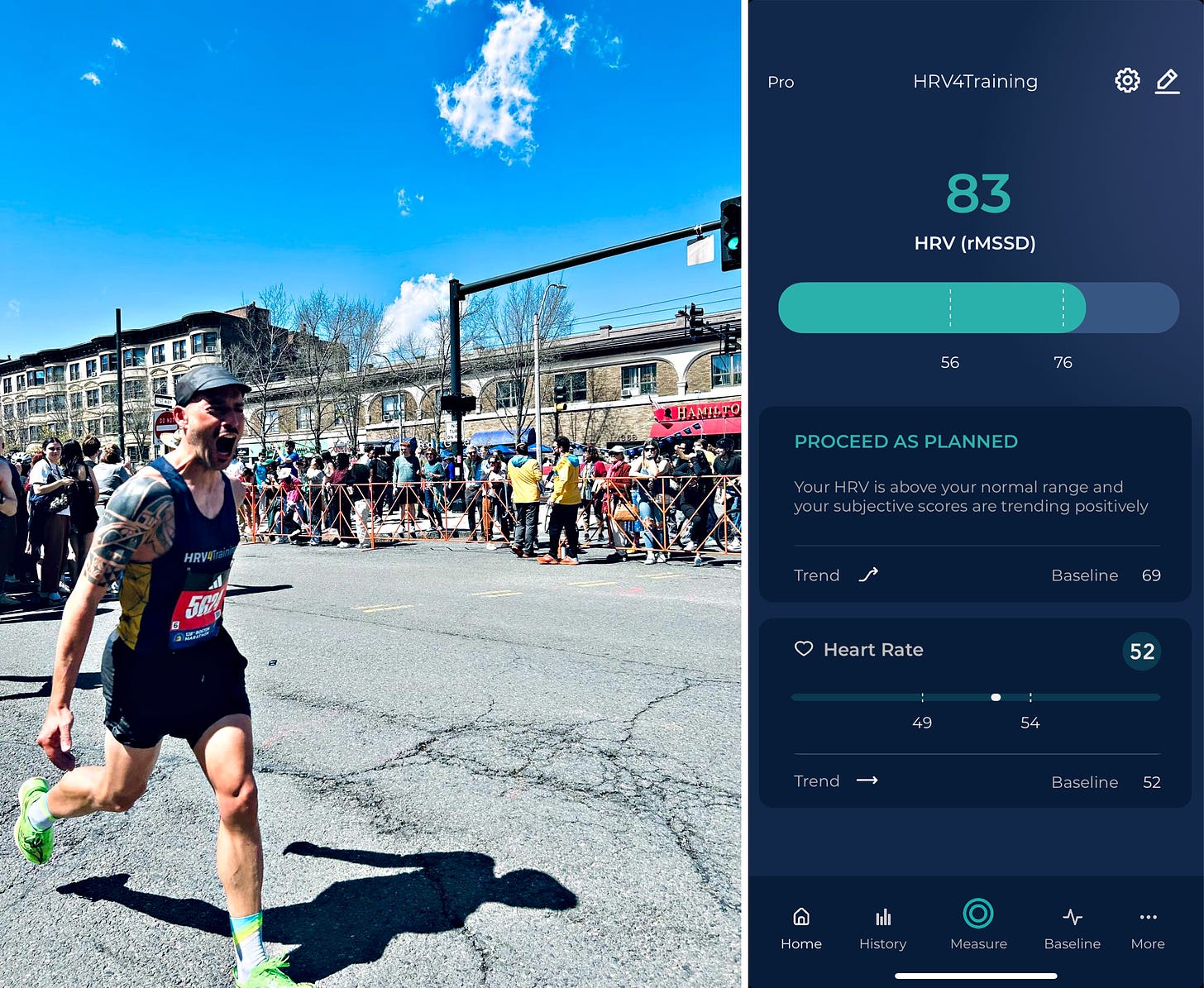
We can see all of this quite well on the aerobic efficiency page in HRV4Training Pro.
What is Aerobic Efficiency?
To determine your aerobic efficiency we compute the relation between output (pace or power) and input (heart rate). Intuitively, a lower heart rate for the same output (pace or power), when consistently shown over periods of weeks, translates into better aerobic efficiency. Similarly, a higher power or faster pace at the same heart rate is linked to improved aerobic efficiency. By analyzing the relationship between input and output for running or cycling activities, you can easily track aerobic efficiency changes over time, as you progress with your training.
While aerobic efficiency is in arbitrary units, it can be interesting to see how things change in the long term (these changes would show how cardiorespiratory fitness changes), and also acutely after an effort (these changes reflect fatigue). For example, below we can see acute changes due to recovery, travel stress and environmental stress during the second race (heat).
There is a large difference in aerobic efficiency with respect to the marathon I ran a week before in Italy:
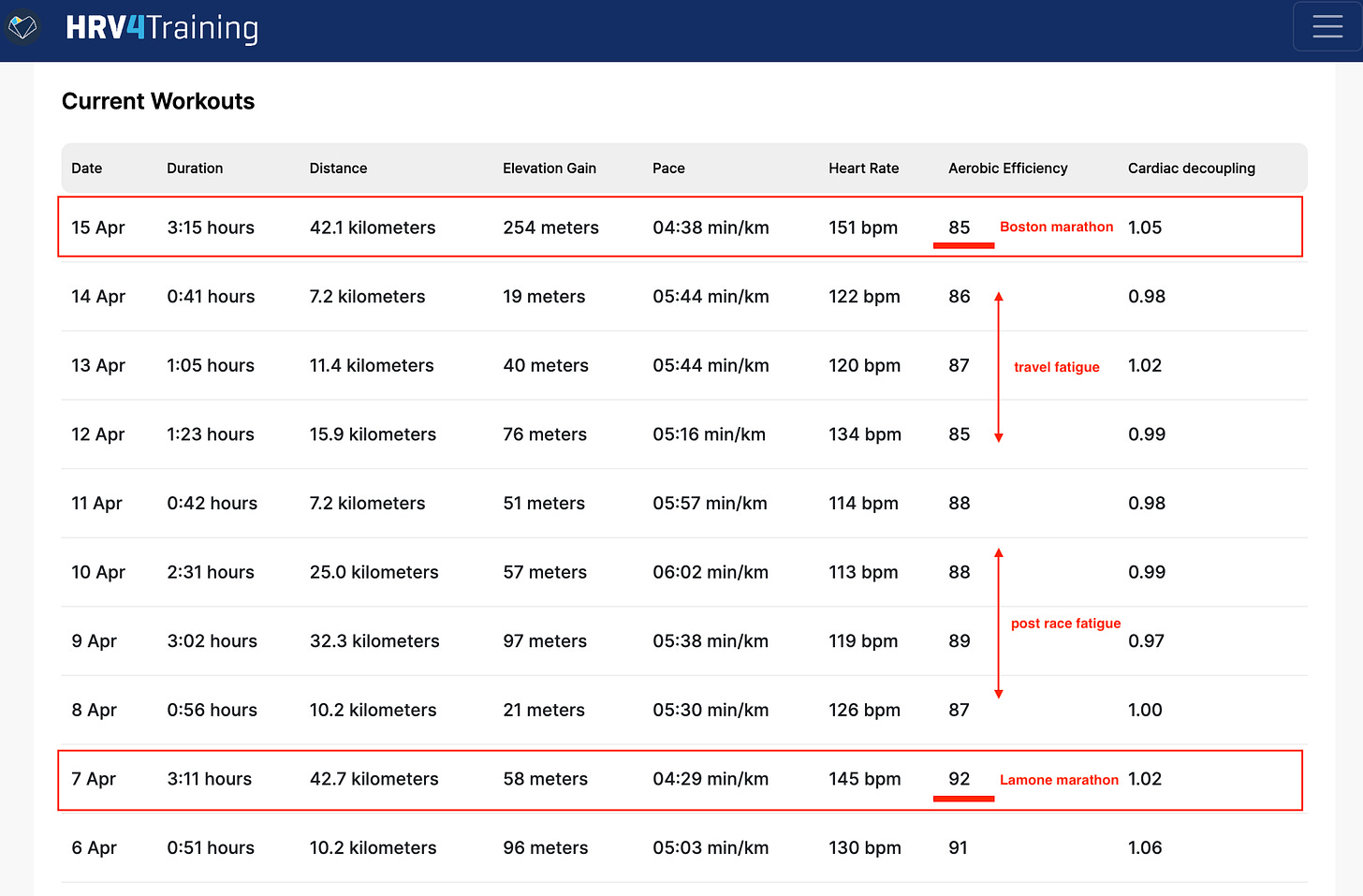
In particular, my heart rate was 5-6 bpm higher for this race with respect to last week’s, despite a 10"/km slower pace. I had to park my ego very quickly when I noticed the effort was harder than expected. I didn’t feel as strong, and it would have been foolish to power through, I believe (as confirmed by all the ‘wave 1 walkers’ I passed in the last few miles).
In the aerobic endurance page, we can see I had a 92 (arbitrary units) for the Maratona del Lamone, and a 91 the day before while doing a short run with strides as part of a mini-taper (2 days). After the race, there’s a bit of fatigue, and heart rate can be higher at a given pace (87-89 in aerobic efficiency). We can see that quite well in the screenshot above. Then, after the travel to Boston, things get quite a bit worse, due to jetlag and travel fatigue (85-87 in aerobic efficiency). I’ve been sleeping really poorly, and my heart rate is always quite elevated while running. On race day, the difference between the Maratona del Lamone (92) and Boston (85) is really large, due to a combination of travel fatigue and environmental stress (i.e. the heat). The only thing to do in these cases is simply to adjust our plans, and run at a lower external load (i.e. slower).
Here is my pacing in Boston (top, actual pace, bottom, grade adjusted pace):
Boston is a hilly course, and I had planned to let my heart rate go up a bit higher on the uphills, then bring it down on the downhills, while running easy to also save the muscles for a strong finish. However, I found myself slowing down even more on the downhills as my heart rate increased more than I was expecting, and would not go down quickly (probably because of the temperature and dehydration at that point), and I was afraid I’d start cramping later on.
Here is my heart rate for the race, the peak was when I saw Alessandra and shouted "Come on Boston" to the crowd, see pic above (and Boston didn't disappoint, shouting back even louder!).
I ran a controlled effort until the hills, more or less at 25 km, then my heart rate drifted a bit, and I started pushing at about 35 km, for the last 7-8 km:
In terms of race protocols, I used the same that I have tried and tested many times in the past 2 years, with a slightly higher carb intake: 1 gel every 6 km, 1 sodium pill with the same frequency, a sip of water any time I have the chance, maurten bicarb pre-race (I think that with my very high sweat and sodium loss rates, a massive amount of sodium pre-race is helpful for performance, if not for cramps - hot topic!). Usual breakfast too, with oats and fruits, which I had back home in Italy and on the bus when going to the start of the Boston marathon. Then pacing by heart rate and perceived effort.
That’s a wrap for these first two events. Below is another look at aerobic efficiency for the days after Boston, where we can see even more difficulties, especially after traveling back to Amsterdam (hence, double marathon and double jetlag). It does look like I am re-normalizing towards the end:
The third event was the 50 km di Romagna, a really beautiful course and competitive race (both the current World champion - Lachgar Chakib - and European champion - Ruel Guillaume - for the 50 km were present).
Here is my week prior to the race, which includes also the Boston marathon. On Sunday I was back in Brisighella and feeling good, so I went for a hard workout (2 x 25’ @ threshold uphill), even though it was just three days before the race. The point of using races as training should be that we don’t need to compromise training, so I figured this would be okay:

The race itself went well. I started aiming for a similar Z2 pace as in the prior events, and again my heart rate was quite a bit higher than I was hoping for, probably because of fatigue. I settled on a relatively slow pace, with respect to the previous marathons, and stayed calm. Despite the heart rate, I was feeling really well (the opposite of Boston, where I felt really fatigued, and thought it would have been foolish to push harder). Given how I was feeling, I let my heart rate climb a few beats higher, and started pushing mid-way through the race, with a 5 km climb at marathon pace, followed by a relaxed but quick descent, and then a steady pace for 10-15 km, before pushing a bit harder again for the last 5 km:
I found this event quite useful, especially because of the slightly elevated heart rate, which did not impact my ability to execute and feel strong at the end.
4 more weeks of training before the 100 km del Passatore.
Thank you for reading, and enjoy your training!
Other resources:
Marco holds a PhD cum laude in applied machine learning, a M.Sc. cum laude in computer science engineering, and a M.Sc. cum laude in human movement sciences and high-performance coaching.
He has published more than 50 papers and patents at the intersection between physiology, health, technology, and human performance.
He is co-founder of HRV4Training, advisor at Oura, guest lecturer at VU Amsterdam, and editor for IEEE Pervasive Computing Magazine. He loves running.
Social:
Twitter: @altini_marco.
Personal Substack.





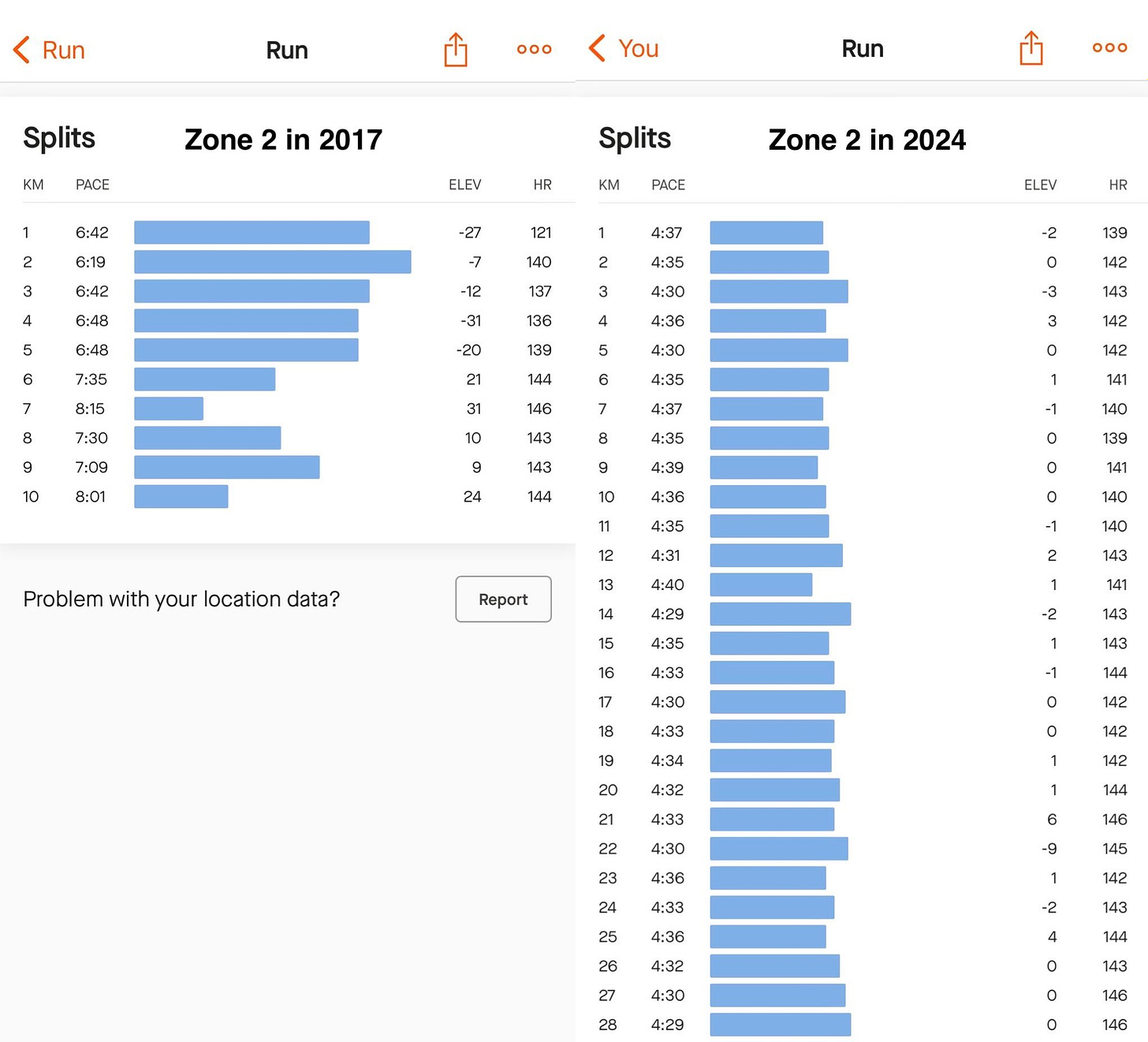
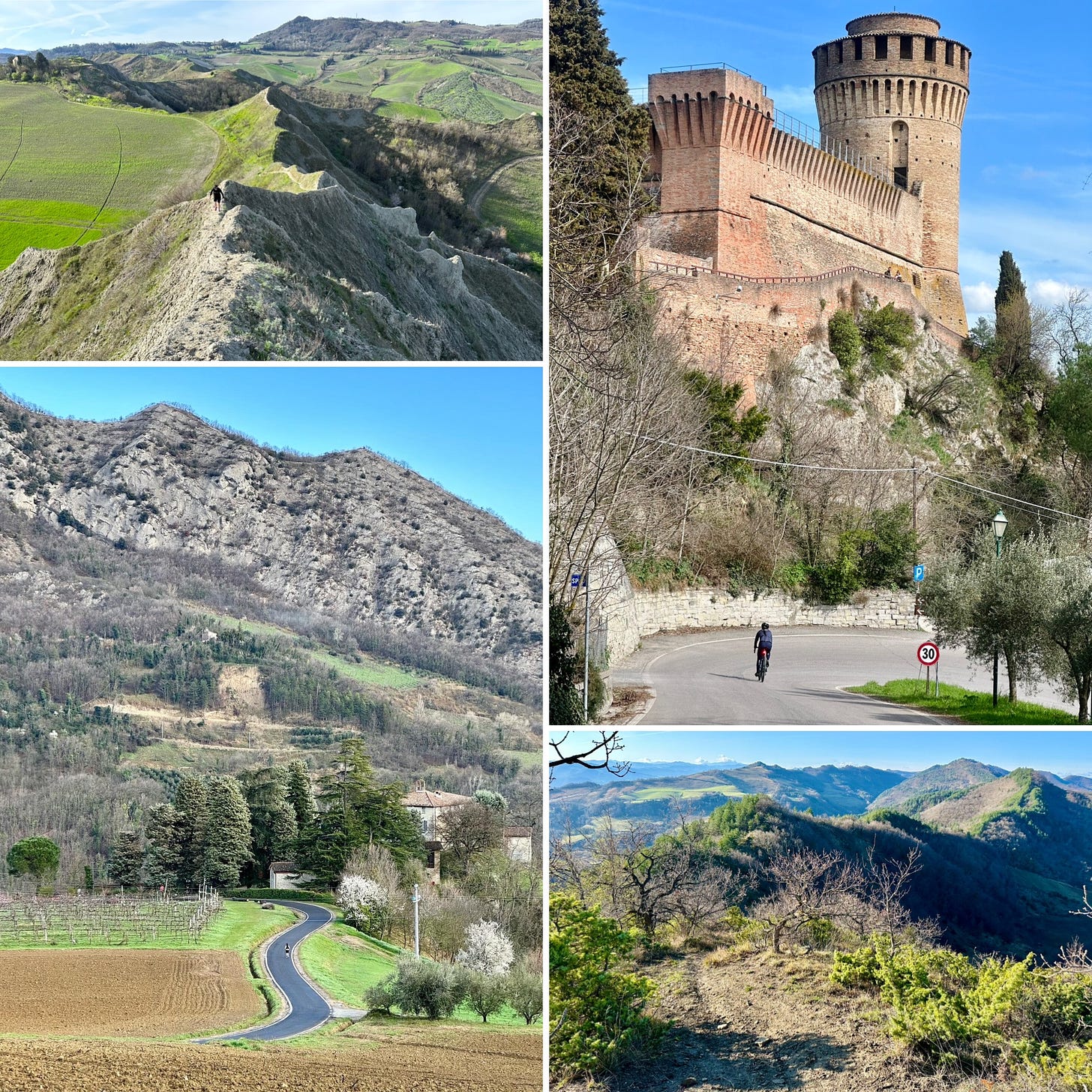

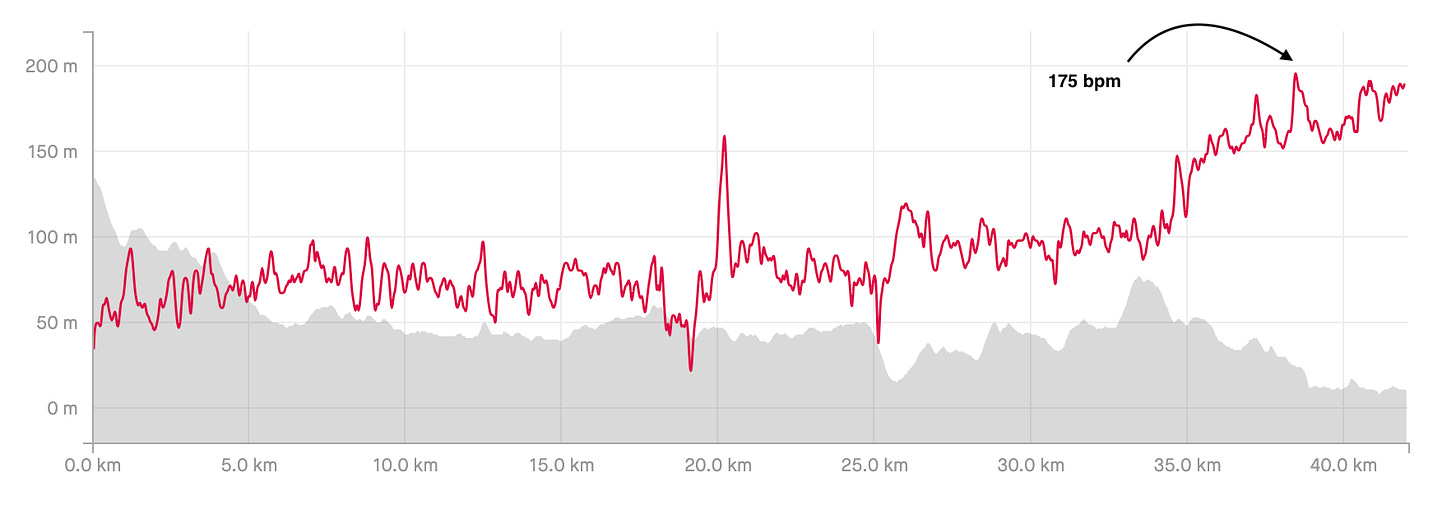

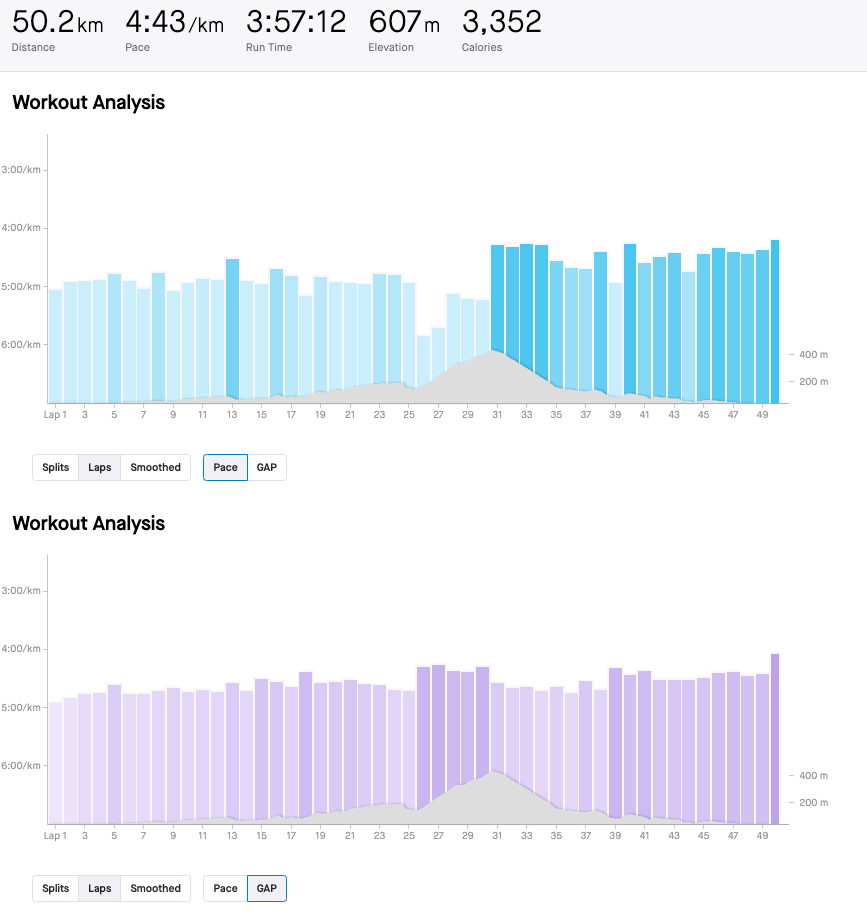
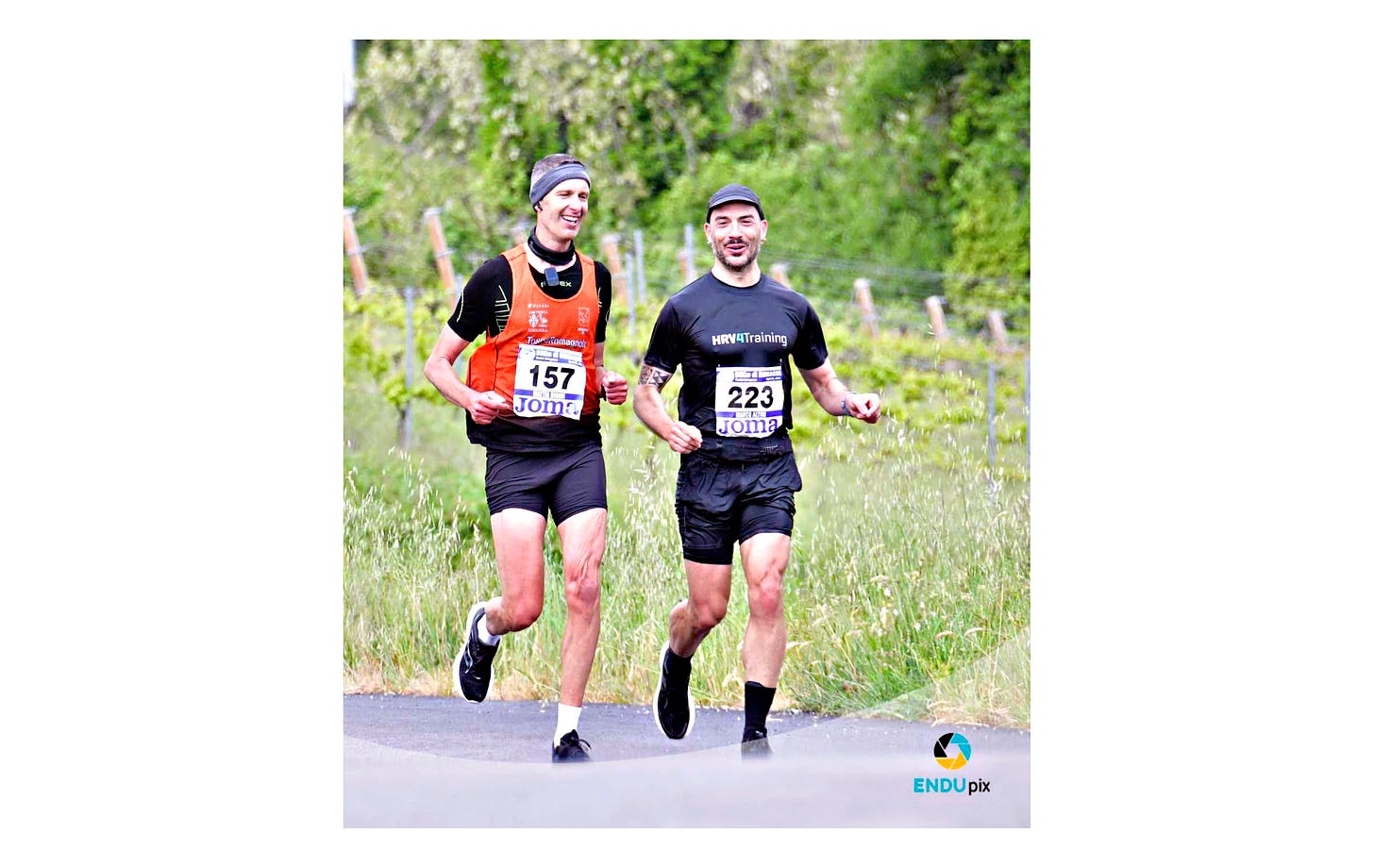


I used to race a hilly 56km every year, Two Oceans in S. Africa. We'd do marathons as training runs just like this, 3:15-20 as an easy effort. Usually there would be guys running with me and commenting on how easy it looked, "you could probably break 3 !" well yes I could but then it wouldn't be training ;-)
Marco... I greatly appreciate all you've done and information you share regarding HRV. I can't get my profile to open on the app.. the page is blank. I'd like to subscribe but can't find anywhere to do it. Thanks for all your help!